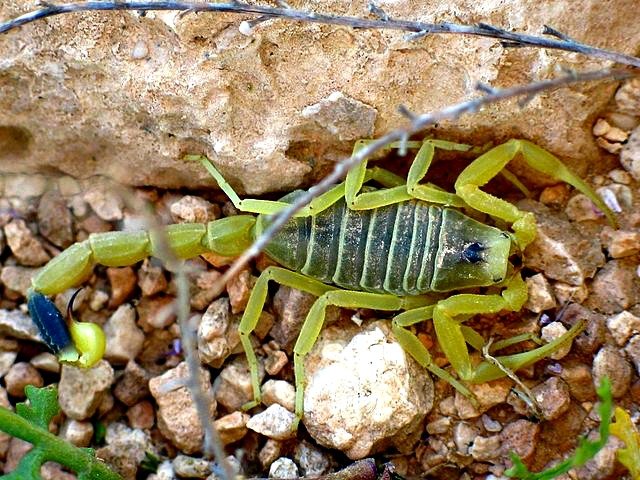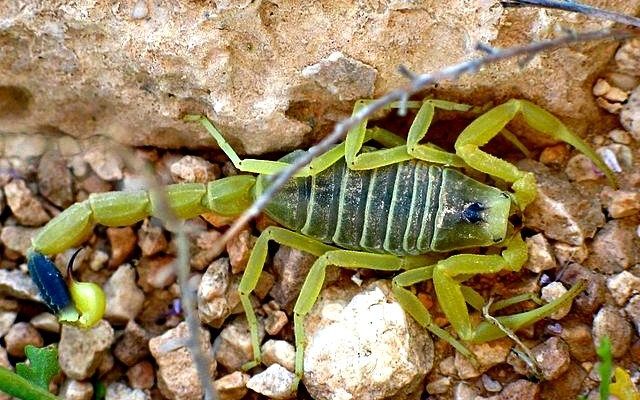
Imagine a tiny, armored warrior, ready to face challenges in an unforgiving landscape. The Deathstalker not only survives but thrives in harsh environments. This scorpion has some unique adaptations and abilities that make it a standout in the insect world. So, whether you’re curious about its venom, hunting techniques, or even how it fits into the ecosystem, stick around—there’s a lot to uncover!
What Makes the Deathstalker Scorpion Unique?
The Deathstalker scorpion (scientific name: *Leiurus quinquestriatus*) is unique for several reasons. For starters, its bright yellow coloring is as stunning as it is iconic. The coloration isn’t just for show; it helps the scorpion blend into its sandy surroundings, making it harder for predators to spot. This camouflage is a perfect example of nature’s creativity, allowing the Deathstalker to hunt and hide effectively.
Another distinctive feature is its size. Typically, Deathstalkers measure around 3 to 4 inches long. While that might not seem very intimidating, don’t let its small stature fool you. This little guy packs a punch with its potent venom, which is among the most toxic of all scorpions. Just think of it as a tiny superhero with a powerful sting that’s vital for both its survival and its role in the ecosystem.
Understanding Its Venom
You might be wondering, what exactly makes the Deathstalker’s venom so special? Well, it’s not just harmful; it’s a complex cocktail of proteins and enzymes. The venom can cause severe pain, and in some cases, it can be deadly, particularly to small animals. However, it’s important to note that fatalities in humans are rare, with prompt medical care usually leading to recovery.
Interestingly, the venom contains components that researchers are studying for medical applications. For instance, some studies suggest that certain proteins from the venom may help in developing medications for cancer and other diseases. So, while the Deathstalker looks fierce, it might just save lives in another way!
Hunting and Diet
You might think that a scorpion’s diet consists solely of insects, but the Deathstalker has a somewhat varied menu. It primarily feeds on small invertebrates, such as crickets and beetles, but it might also munch on smaller scorpions. Imagine being a little insect in the desert when a Deathstalker scorpion pounces on you—it’s a gripping scene straight out of nature’s drama!
Scorpions, including the Deathstalker, have a unique way of hunting. They first inject their prey with venom to immobilize it. Then, they can consume it safely without the risk of being harmed. This hunting strategy is an excellent example of how these creatures have adapted over time to thrive in their environments.
Habitat and Distribution
The Deathstalker scorpion prefers hot and arid regions. It’s commonly found in deserts across North Africa and the Middle East. Their preferred habitats include sandy soils and rocky terrains, where they can easily burrow and hide from predators and the scorching sun. Picture a tiny soldier, expertly maneuvering through the desert landscape, seeking both shelter and prey.
The Deathstalker is quite adaptable, which is key to its survival. During the hottest parts of the day, it tends to burrow underground or find shade to avoid extreme heat. When night falls, that’s when it comes alive, hunting for food under the cover of darkness. This nocturnal behavior is another fascinating aspect of its life cycle, highlighting how it’s evolved to survive in a challenging habitat.
Behavior and Lifespan
In terms of behavior, the Deathstalker is often solitary. Unlike some species that form colonies, it prefers to roam alone, seeking food and shelter. This independence makes sense given its predatory lifestyle; it needs to focus entirely on hunting without the distractions of a group.
As for lifespan, Deathstalkers can live for several years in the wild—typically around 5 to 7 years. In captivity, with the right care, they can live even longer. Their ability to thrive for years is a testament to their resilience and adaptability in nature.
Potential Dangers and Myths
You may have heard some myths surrounding the Deathstalker scorpion and its dangers. One common misconception is that it’s always lethal. While its venom is indeed potent, as mentioned earlier, fatalities in humans are rare, especially with modern medical treatment. It’s crucial for people to understand that knowledge and caution can prevent dangerous encounters.
Another myth is that all scorpions glow under UV light. The Deathstalker, like many others, does have a fluorescent quality that makes it glow in the dark! This feature is used for various purposes, such as attracting mates or deterring predators. So, while it may seem like a spooky Halloween trope, there’s actually a scientific reason behind it!
Conservation Status and Ecological Importance
As for conservation, the Deathstalker scorpion is currently not listed as endangered. However, habitat destruction and climate change can pose threats to their populations in specific areas. Preserving their environments is crucial not just for the scorpions but for the entire ecosystem, as they play a vital role as both predator and prey.
Their ecological importance can’t be overstated. By controlling insect populations, Deathstalkers help maintain the balance in their ecosystems. They are part of a complex food web, and the decline of one species can wreak havoc on others. So, protecting these fascinating creatures is essential for the health of their habitats.
In summary, the Deathstalker scorpion is not just another creepy-crawly; it’s a remarkable survivor with many unique traits that help it thrive in harsh conditions. From its potent venom to its adaptations for hunting and habitat, there’s so much more to appreciate. The next time you hear the word “scorpion,” I hope you think of this little warrior and all its intriguing qualities!

